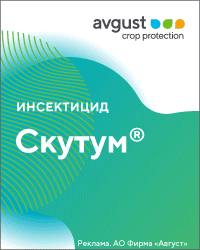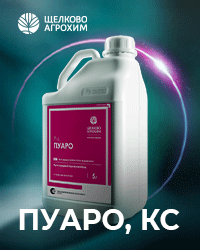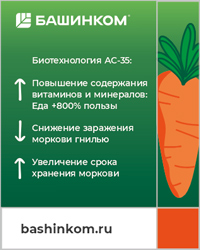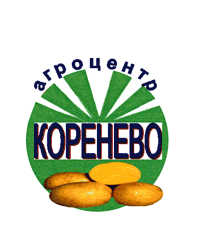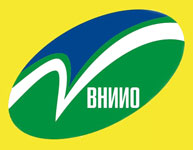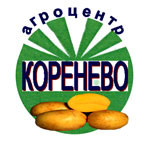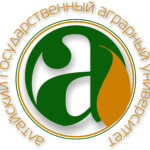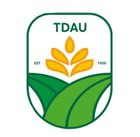UDC 635.64: 631.527
https://doi.org/10.25630/PAV.2025.33.98.007
Gavrish S.F., Redichkina T.A., Sushkova A.A
The article presents a comparative analysis of parental lines and promising F1 tomato hybrids with pink tomatoes. The evaluation was based on a set of economically significant traits, including biochemical (dry matter content, total acidity) and organoleptic indicators (flesh brightness, tasting score). The study was conducted at the Crimean Breeding Center of the Gavrish Research Institute in 2023-2024. Analysis of parental lines revealed significant variability in terms of dry matter content (3.8-6.2%) and total acidity (0.43-0.99%). Paternal lines were more likely to exhibit more intense flesh color. Parental forms with the most balanced taste (tasting score > 4 points) were identified. The variety testing of F1 hybrids allowed us to identify combinations with high early maturity (92-96 days), yield (up to 21.0 kg/m²), and marketability (up to 99%). The hybrids were characterized by shortened internodes. The maximum dry matter content was recorded in the k-3857/23 hybrid (6.6%). The heterosis analysis showed a positive effect on dry matter content (+23.3%) and tasting score (+4.9%), and a negative effect on total acidity (-39.4%). The inheritance of flesh brightness was polymorphic. The most promising parent lines and hybrid combinations were selected for further breeding. Significant correlations between the studied traits were identified. The results obtained contribute to the development of new competitive tomato hybrids with improved characteristics. The F1 k-3857/23 hybrid showed the greatest potential and was recommended for submission to the State Commission.
Gavrish S.F., D.Sci., professor, Head of the Board of Directors of GAVRISH company
Redichkina T.A., Cand. Sci. (Agr.), director of NIISOK LLC
Sushkova A.A., (author for correspondence), research fellow, Gavrish LLC, Applicant of FSBSI FSVC. E-mail: sushkova-nastyusha89@gmail.com
- Beckles D. M. Factors affecting the postharvest soluble solids and sugar content of tomato fruit. Postharvest Biology and Technology. 2012. No63(1). Pp. 129–140. DOI: 10.1016/j.postharvbio.2011.05.016
- García-Valverde et al. (2013). L-Ascorbic acid was. among the components in tomatoes highly sensitive to thermal degradation. Jordan Journal of Agricultural Sciences. 2013. No18(3). Pp. 199–220. DOI:10.35516/jjas.v18i3.444
- Gavrish S.F. 100 years of breeding of the protected ground of Russia 1920-2020. Gavrish. 2024. No2. Pp. 281–283 (In Russ.).
- Delgado et al. Consumer Preferences for Tomato Attributes: A Meta-Analysis. Food Quality and Preference. 2021. 89. Pp. 104–115. DOI: 10.1016/j.foodqual.2020.104115
- Vyrodova A.P., Yanovchik O.E. The color of tomato fruits determines their biological value. Potato and vegetables. 2009. No2. P. 30 (In Russ.).
- Gavrish S.F. Results of 2020. Protected-ground vegetables. Gavrish. 2021. No1. Pp. 20–30 (In Russ.).
- Litvinov S.S. Methodology of field experience in vegetable growing.: Moscow. Russian Agricultural Academy. 2011. Pp. 254–255 (In Russ.).
- Azacytidine Induced Epigenetic Variations Improve Fruit Quality and Yield in Tomato Grown under Soil Conditions. Z.A. Khan, A. Saleem, H. Imtiaz, R. Ahmad. Pak. J. Bot. No57(4). DOI: http://dx.doi.org/10.30848/PJB2025-4(9)
- Yuling Bai, Pim Lindhout Domestication and Breeding of Tomatoes: What have We Gained and What Can We Gain in the Future? Annals of Botany. Vol. 100. Issue 5. October 2007. Pp. 1085–1094, https://doi.org/10.1093/aob/mcm150
- Lei Liu, Kang Zhang , Jinrui Bai, et al. Tomato fruits with fleshy flesh are controlled by reduced AFF expression due to a structural mutation in the promoter. Journal of Experimental Botany. Vol. 73, Issue 1, January 5. 2022. Pp. 123–138, https://doi.org/10.1093/jxb/erab401
- Petro-Turza M. Flavor of Tomato and Tomato Products. Food Rev. Intl. 1987. Vol. 2. Pp. 309–351.
- A chemical genetic roadmap to improved tomato flavor. D Tieman, G Zhu, MFR Resende Jr, T Lin, C Nguyen. Science. 2017. January 27. Volume 355. Issue 6323. Pp. 391–394.DOI: 10.1126/scienceaal1556.
- Audrey Darrigues¸Jack Hall et al. Tomato Analyzer-color Test: A New Tool for Efficient Digital Phenotyping Online. Volume 133: Issue 4. Jul 2008 Pp: 579–586. DOI: https://doi.org/10.21273/JASHS.133.4.579
- GOST 8756.13-87. Products of processing of fruits and vegetables. Methods for determination of sugars. Moscow. Standartinform, 2010. 10 p. (In Russ.).
- GOST 25555.0-82. Products of processing of fruits and vegetables. Methods for determination of titrated acidity. Moscow. Standartinform, 2010. 3 p. (In Russ.).
- GOST 24556-89. Products of fruit and vegetable processing. Methods for determining vitamin C. Moscow. IPK, Publishing House of Standards. 2003. 10 p. (In Russ.).
- Dospekhov B.A. Methodology of the field experience. Moscow. Agropromizdat. 1985. 382 p. (In Russ.).
For citing: Gavrish S.F., Redichkina T.A., Sushkova A.A. Comparative evaluation of pink F1 tomato hybrids with intense flesh color in terms of yield, biochemical composition, and organoleptic characteristics in film greenhouses in southern Russia. Potato and vegetables. 2025. No4. Pp. 55-60. +https://doi.org/10.25630/PAV.2025.33.98.007 (In Russ.).

